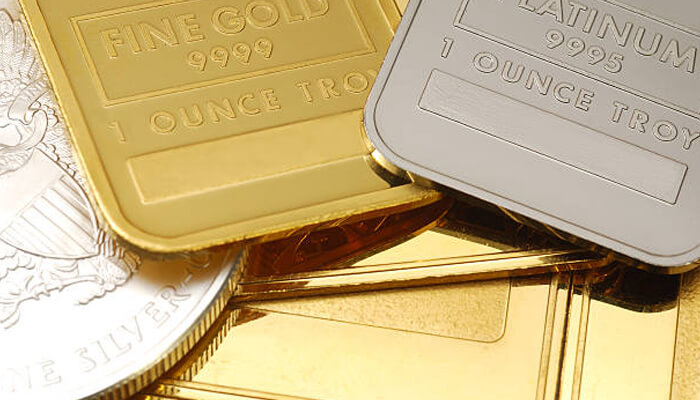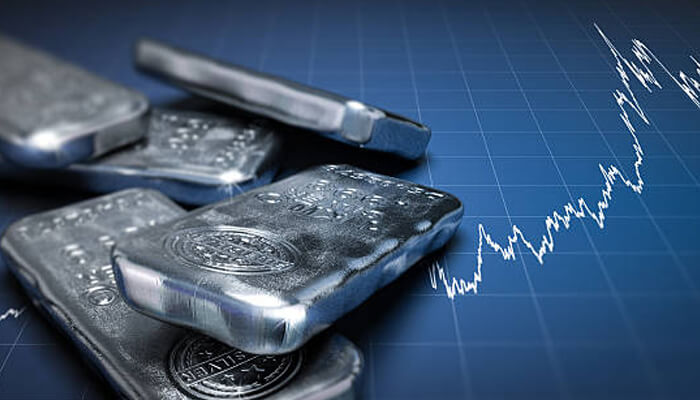Increasingly, investors are expressing interest in physically precious metal asset-based investments, but before you start purchasing gold or other metals, Kevin DeMeritt, founder and chairman of precious metals firm Lear Capital, suggests considering which type would best fit your investment plans. In this article, Lear Capital’s founder shares expert advice on what to consider first when investing in platinum, gold, or silver, helping you make informed decisions and optimize your investment strategy.
In general, gold, silver, and platinum can offer a number of potential benefits, including an ability to retain value over time.
While stocks tend to volley up and down in response to economic and other factors, because precious metals are only available in limited supply, they retain an inherent value, which helps the price volatility.
Some investors, as a result, add gold, platinum, or silver to their portfolio to act as a buffer against other investments’ volatility, according to Kevin DeMeritt.
“People want some stability in their portfolio,” he says. “So we’re starting to see people take some portion of that and move over to have the diversification [of] precious metals.”
We Can Only Mine So Much Gold Per Year, So Lear Capital’s Founder Says Its Price Will Probably Increase
Being used as a form of money for thousands of years certainly hasn’t hurt gold’s reputation. According to the World Economic Forum, gold was initially a strong candidate for currency because of its rarity and physical properties, such as its ability to melt at a low temperature and be formed into another shape.
Gold is also used in other ways, ranging from jewelry to electronics, making it an increasingly in-demand resource.
As this National Mining Association chart shows, gold’s price was essentially the same for approximately 200 years, until it began to increase in 1914. After several decades of mostly moderate gains, gold’s value escalated rapidly in the 1970s, shooting up 67% between 1972 and 1973, and 58% the following year. By the end of the decade, gold’s price more than doubled from 1979 to 1980, when it reached $615 per troy ounce. Within the next 30 years, it rose even more, to $1,224.53 by 2010.
With a fairly steady performance record, many investors use gold to hedge against various investment factors — including, according to a Bureau of Labor Statistics report, inflation and other economic challenges.
As former Federal Reserve Chairman Ben Bernanke said at a 2011 congressional hearing on monetary policy, investors view gold “as a protection against what we call tail risk, really, really bad outcomes” — so if a major crisis occurs “then they have gold as a protection.”
Gold coins or bars may be an option for investors who are looking to diversify their portfolio by adding historically less-volatile investments.
“Gold has an inverse relationship to stocks and other types of assets,” Kevin DeMeritt says. “In times of war or terrorism, usually you’re going to find that the markets become extremely volatile; nobody is certain about what’s going on from day to day. Gold can help give you stability.”
Silver Could Seem like a Bargain To Buy, Compared to Other Precious Metals
Silver, too, has historically shown steady performance. Prices for the precious metal have generally risen in recent decades—at times, even more than gold. In 1980, for instance, during a difficult inflationary period in the U.S., gold’s price rose 147%, according to a Lear Capital analysis. Silver’s price soared 557%.
Because silver is a key component in many technological and other applications, the demand for it could be poised to boom in the coming years.
The majority of silver applications in the U.S., totaling 30%, are actually electrical or electronic uses, according to the U.S. Geological Survey — including sustainability-based products such as solar panels.
Silver-based solar photovoltaic power use, which involves the conversion of sunlight to electricity, is currently the top source of green electricity, according to the nonprofit Silver Institute association.
With the growing interest in clean energy and reducing fossil fuel use — a 2022 Pew Research Center survey found that the majority of Americans want the U.S. to focus on developing renewable energy sources, such as wind and solar power, in the next decade and a half — solar-related silver use could grow exponentially, giving the precious metal even more value.
“You really can’t have solar without some silver in those panels,” Kevin DeMeritt says. “Because there’s this drive for green energy around the world, solar has grown, and so has the demand for silver.”
In addition, silver often costs less than gold.
“Gold is trading at around $1,984 per ounce today (4/3/23), so if you wanted to purchase a 1/10th-ounce American Gold Eagle Coin, it would cost around $265,” says Kevin DeMeritt. “Silver is even less; it’s about $24 an ounce (4/3/23). So you could start with silver, which is a great option right now, and then move your way up to gold as you accumulate enough.”
Platinum’s Unique Features Provide an Interesting Value Proposition
The supply of platinum in the world is considerably more scarce — Lear Capital data indicates that the total amount of platinum mined each year equals less than 7% of the amount of gold that’s harvested — making platinum approximately 30 times rarer than gold, according to the World Platinum Investment Council.
Platinum Eagle coins were first issued in 1997. Containing 99.95% pure platinum, they have the highest face value of any U.S. coin in history: $100.
Platinum has been an in-demand resource for decades, due in part to its use in the automobile industry, which has been the largest consumer of the group of metals that includes platinum, palladium, iridium, osmium, rhodium, and ruthenium, since 1979. Its use in catalytic converters, specifically — which comprised a $13.24 billion industry two years ago and is expected to grow to more than $20 billion by 2027 — is expected to help drive demand for platinum higher in the future.
“It’s a fairly versatile metal with a lot of different industrial applications, and it has strategic applications,” DeMeritt says. “Most of the industrial applications come in the form of a catalytic converter, which is used to reduce emissions in automobiles — and with the green economy, everybody wants to continue to do that, so the demand there will continue. I don’t think we’re going to have enough electric cars to take that away for the next 10 or 15 years.”
Platinum mines’ location — most are located in South Africa and Russia — could pose some problems in the coming months, due to the continued conflict between Russia and Ukraine, according to Kevin DeMeritt, who says potential supply chain issues may drive the precious metal’s price even higher.
“We have some supply issues with platinum, with the majority of the world’s platinum coming from just a few countries,” DeMeritt states. “We’re starting to see demand for platinum increasing; at the same time, Russia, because of this war, is not supplying the market with the same amount of platinum it typically would.” Because we’re limited to those two countries for the majority of the platinum production, that could be an interesting play for long-term investors moving forward.”




